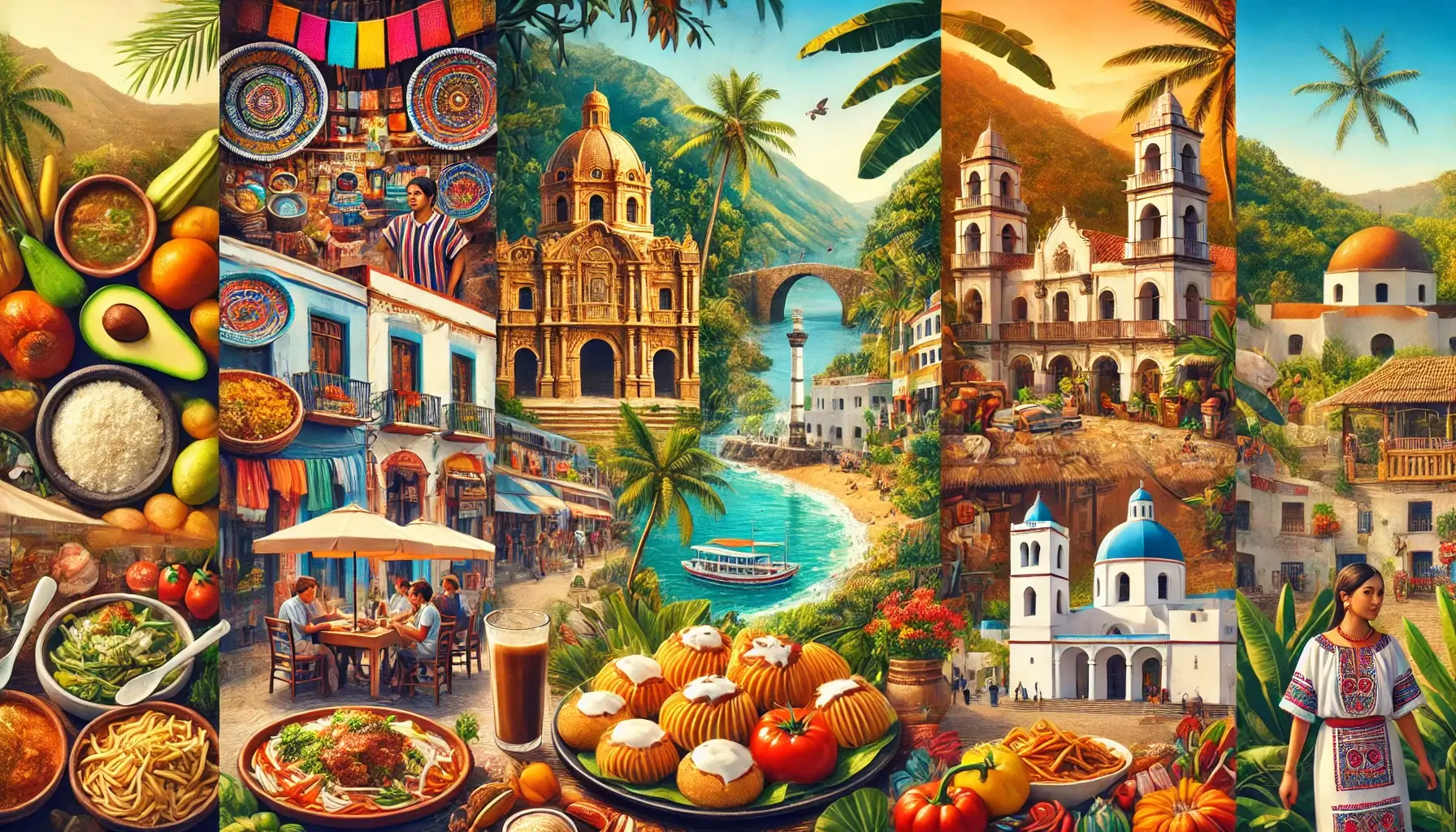Introduction
Travelers often flock to popular destinations in search of well-known culinary experiences, but some of the most authentic and flavorful dishes are found in underrated places. These hidden gems offer a rich and immersive culinary journey, where traditional recipes are passed down through generations. Moreover, these destinations provide a chance to reconnect with local cultures and savor unique flavors that haven’t been influenced by global food trends. Let’s dive into the flavors of the forgotten, as we explore underrated destinations offering authentic cuisines and cultural immersion through food.
1. Why Underrated Destinations Hold Culinary Gems
Many travelers head to famous food capitals such as Paris, Tokyo, or Rome. While these cities boast celebrated cuisines, lesser-known destinations hold equally impressive culinary treasures. These places preserve traditional recipes that are deeply connected to local culture, offering an experience that is as genuine as it is delicious.
For example, the Zagori villages in Greece present hearty dishes like local pies and foraged mushrooms. These dishes have remained staples in the region for centuries. Similarly, Portugal’s Alentejo region offers rustic flavors, with dishes such as migas and açorda. These recipes, handed down through generations, rely on fresh local ingredients, enhancing their authenticity.
2. Culinary Immersion: Eating Like a Local
One of the most remarkable aspects of visiting these underrated destinations is the opportunity for culinary immersion. Unlike mainstream tourist spots, these places encourage deeper connections with the local culture. Often, locals welcome travelers into their homes, offering meals that provide a window into their way of life.
In Georgia, for instance, the supra (a traditional feast) plays a crucial role in local culture. At a supra, guests enjoy dishes like khachapuri (cheese-filled bread) and khinkali (dumplings). More importantly, the experience goes beyond the food, as it includes the sharing of stories, traditions, and toasts that deepen your understanding of Georgian culture.
3. Top 5 Underrated Destinations for Authentic Food Experiences

a. Oaxaca, Mexico
Though often overshadowed by tourist hotspots like Cancun or Mexico City, Oaxaca offers an incredible variety of traditional dishes. Famous for its seven moles (rich sauces made with chili peppers, chocolate, and spices), Oaxaca is a haven for food lovers. Visitors can enjoy unique dishes such as tlayudas (large tortillas topped with beans, cheese, and meats) and chapulines (toasted grasshoppers).
b. Puglia, Italy
Tourists often rush to Tuscany or the Amalfi Coast, leaving Puglia relatively quiet. This southern Italian region is known for orecchiette pasta, focaccia barese, and fresh seafood. Additionally, its rural landscapes and family-owned trattorias make it an ideal destination for an authentic Italian food experience.
c. Kerala, India
While India is known for its cuisine, Kerala’s unique culinary traditions often go unnoticed. The region’s food blends Indian spices with influences from the Middle East, offering dishes like appam (a type of rice pancake) served with coconut stew. Moreover, visitors can enjoy sadhya, a vegetarian feast served on a banana leaf, which showcases the depth of Kerala’s culinary heritage.
d. Basque Country, Spain
Straddling the border between Spain and France, the Basque Country offers a distinct food culture unlike anywhere else. Visitors are treated to pintxos—small, flavorful bites displayed in local bars. Additionally, iconic Basque dishes such as txuleta (grilled rib-eye steak) and bacalao a la Vizcaina (salted cod with red pepper sauce) highlight the region’s incredible cuisine.
e. Lviv, Ukraine
In western Ukraine, the historic city of Lviv has preserved its Galician culinary traditions. Here, visitors can enjoy local dishes like banosh (cornmeal porridge with cheese) and varenyky (dumplings filled with potatoes or cherries). Furthermore, Lviv’s vibrant café culture offers the perfect backdrop for indulging in these timeless flavors.
4. The Role of Local Ingredients in Authentic Cuisine
A significant factor contributing to the authenticity of these dishes is the use of fresh, local ingredients. Chefs in these regions often source produce from local farms or markets, ensuring that their dishes reflect the unique flavors of the area.
In Sardinia, for example, locals make pecorino sardo, a traditional cheese that is served alongside culurgiones, a unique pasta filled with potatoes and mint. Similarly, Iceland highlights its natural bounty by offering dishes made from freshly caught seafood such as cod and langoustine, paired with skyr, a yogurt-like cheese.
5. Keeping Tradition Alive: The Culinary Guardians
One of the reasons these underappreciated shine is the commitment locals have to preserving their culinary traditions. Many families see themselves as the guardians of their cuisine, ensuring that traditional cooking methods and recipes are passed down to the next generation.
In the Cajun region of Louisiana, for example, family recipes for gumbo and jambalaya have survived for centuries. Despite the increasing popularity of the region’s food, locals continue to prepare these dishes with the same care and attention their ancestors did, keeping the flavors and traditions alive.
6. How to Find These Hidden Culinary Gems
To fully discover the authentic flavors of these underrated destinations, travelers must go beyond the tourist hubs. Instead, visit local markets, ask for recommendations from locals, and dine in family-run restaurants. Moreover, participating in cooking classes or food tours can provide a hands-on experience with traditional methods of cooking.
Travel platforms like EatWith and Airbnb Experiences offer the chance to dine with locals and explore authentic food. Additionally, food-centric tours in cities like Valletta, Malta, or Hanoi, Vietnam, allow visitors to immerse themselves in the area’s culinary history.
7. Conclusion: Rediscovering Authentic Cuisines
As global food trends continue to shape the culinary landscape, it becomes even more important to seek out authentic, traditional cuisine. By exploring underappreciated, travelers can experience not only the rich flavors of local dishes but also the cultural stories behind them. These regions offer more than just meals—they provide a culinary immersion that enriches your travel experience.
From the hidden villages of Greece to the vibrant streets of Oaxaca, there is a world of forgotten flavors waiting to be rediscovered. As you venture off the beaten path, you’ll uncover the true essence of a place through its food and the people who take pride in preserving its culinary heritage.
FAQs
Examples include mole from Oaxaca, orecchiette pasta from Puglia, and banosh from Lviv, Ukraine. Each destination offers its unique traditional flavors.
Skip tourist spots and explore local markets. Engage with locals and dine in family-owned restaurants to discover the best traditional food.
Local ingredients reflect the flavors and produce of the region, giving each dish a freshness and authenticity that cannot be replicated elsewhere.
In many regions, locals view themselves as the guardians of their culinary traditions, passing down recipes and cooking techniques from one generation to the next.
Yes! By dining at family-run establishments and participating in local food experiences, travelers contribute directly to the community and help preserve traditional food cultures.






